02 Nov How To Install and Choose Lighting for Your Home
THIS POST IS A PAID COLLABORATION WITH LOWE’S HOME IMPROVEMENT. ALL OPINIONS ARE OUR OWN. THANKS FOR SUPPORTING OUR LITTLE ONLINE CORNER OF THE WORLD!
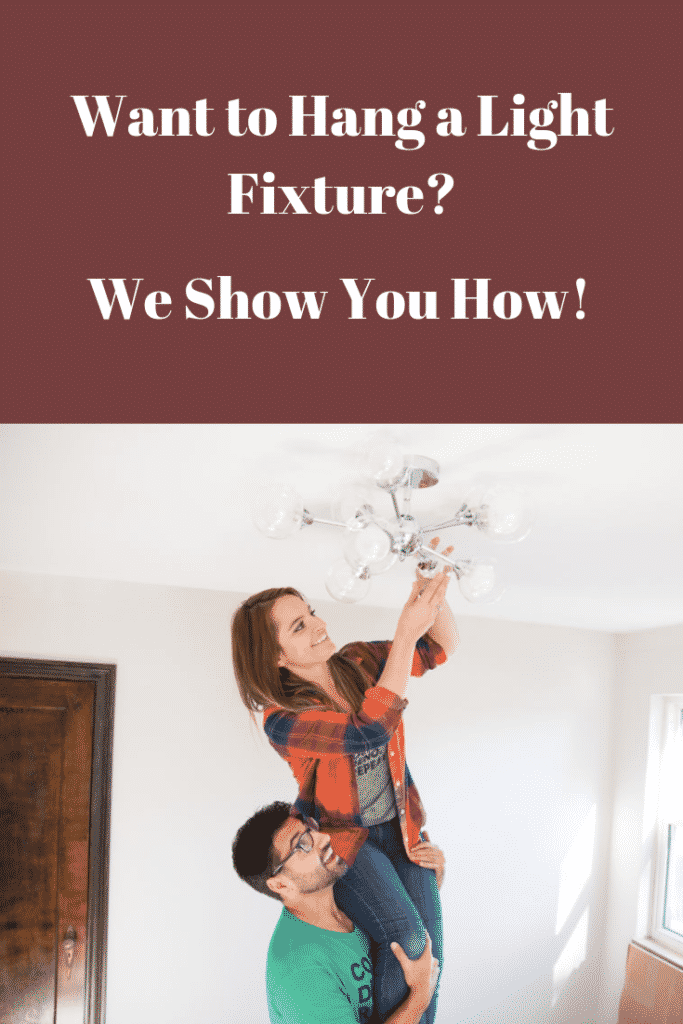
Nothing puts a personal and professional touch on a space like choosing the right light fixture. But now that you’ve selected one (hopefully not a boob light) how do you install it?
We’re here to show you not only how to install your gorgeous new fixture, but also how to choose the right light bulbs and fixtures to flatter your space and fit your lifestyle.
If you’re a visual learner, check out our 8-minute video here. We’ll walk you through each and every step.
Get Ready
Of course, before you get started, make sure you turn off that breaker.
Then, let’s grab our handy tools.
- Southwire Wire Cutter/Strippers
- Southwire ¼” Flat Screwdriver
- Southwire #2 Phillips Screwdriver
- Fluke Digital 1000 Volt Voltage Detector
- Ideal 100 Pack Plastic Wire Connectors
- 1-Step Foldable Step Stool
And if your lighting fixture requires bulbs these are our favorite!
- GE Relax Dimmable Warm White A19 LED Light Fixture Light Bulbs (make sure you get the appropriate size/wattage/etc for your particular light fixture)
If you’re interested in the fixtures we used in our newest Airbnb project (because they’re AMAZING) check out the links below:
- allen + roth
- Quoziel Platinum Collection Spellbound
- Westmore Lighting Knossos
- Style Selections Grayford
- allen + roth Dystra 6-Light Soft Gold Abstract Chandelier
- Quoizel Platinum Collection Spellbound 9-Light Polished Chrome Industrial Hardwired Clear Glass Abstract Chandelier
- Westmore Lighting Knossos Brushed Nickel Flush Mount Light
- Style Selections Grayford 22.2-in W Brushed nickel No Shades Semi-Flush Mount Light

But For Real, Safety First
We know, it might seem like we’re harping on the safety factor. But before you get going, even if the breakers are off, check that the wire you’re working with isn’t live by using your Fluke voltage detector. Our policy is better safe than sorry!
Also, if you go to install your new light fixture and your box looks different than what we’re describing and showing in our video, stop. You might be better off calling a licensed electrician than guessing how to handle a unique electrical situation.
Easy Installation
So, once you’re ready to go, remove the existing fixture and get your new fixture ready. A standard installation includes 3 wires:
- Black–Hot
- White- neutral
- Bare-Ground
And guess what–your lighting fixture has the exact same configuration of wires! You just have to match each wire to their corresponding wire in the fixture.
But let’s not get ahead of ourselves, before you install the light you have to install the plate, which helps support the fixture.
Pro tip: make sure you use the plate that comes with your light fixture.
Once you’ve screwed in the plate, take the ground wire from your fixture. The ground wire serves as an anchor that supports the light while you wire the hot and neutral wires. Now just match up your wires and wrap the exposed tips around each other. Next, over them with a wire connector–then give them a quick tug to make sure the connection is secure. Now comes the exciting part, you’re ready to test your light!
So grab a bulb, turn on the breaker, and let ‘er rip! If it’s working, then you’re ready to fully install your fixture.
Pro tip: Nick recommends wrapping the wire connectors with electrical tape for extra security.
Now make sure that fixture is flush on the ceiling, tuck in the wires, line up and bolts and voila! You’re the proud installer of a shiny new light fixture.
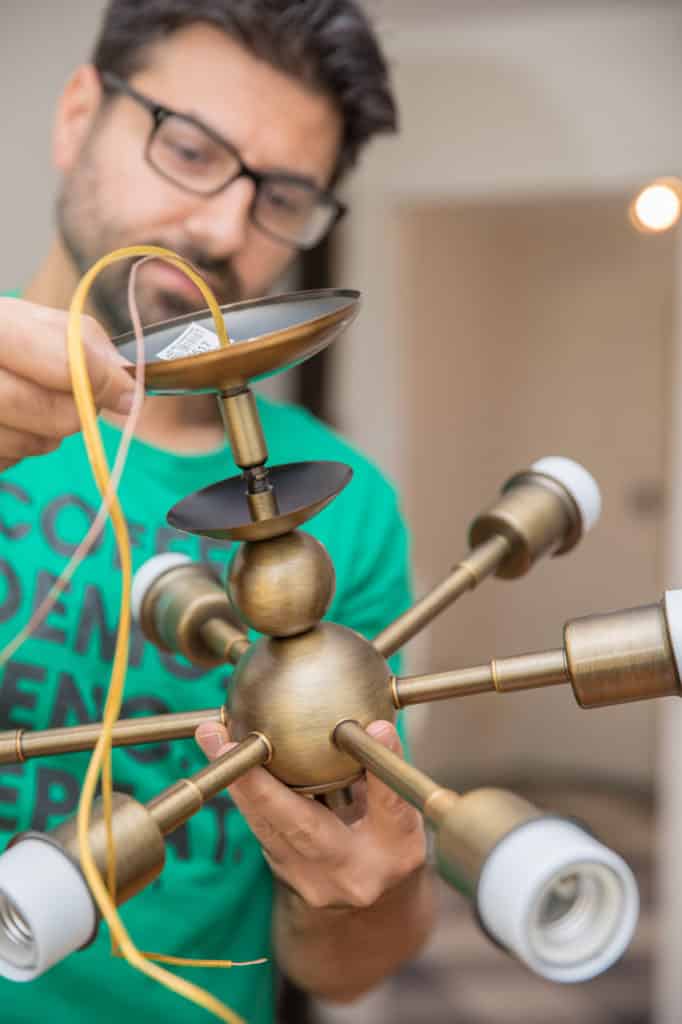
Let There Be Light Bulbs
Now comes the fun part! The bulbs you choose are a huge part of the ambiance you’re creating in your space.
If the fixture you bought doesn’t come with bulbs, you might be scratching your head wondering what to choose that will suit both the light itself and your lifestyle.
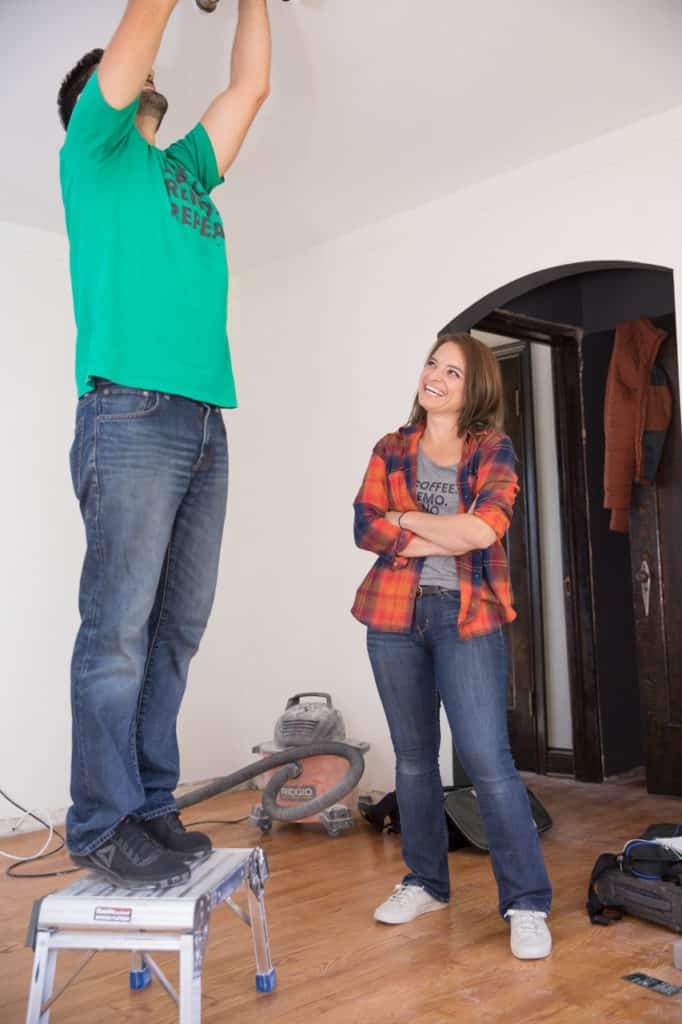
LED Bulbs 101
There is a lot of information out there when selecting a bulb, but don’t let all of those letters and numbers intimidate you–they’re there to help you. For example, here’s how to decipher a lightbulb with the name E26.
The letter lets you know what kind of socket type the bulb is, so in this case, E equals Edison Screw. The number following the E lets you know what the size of the external thread screw is (make sure this matches on your light fixture or you won’t be able to install it).
What’s the difference between wattage and lumens? Though they may seem interchangeable, watts are a measurement of how much electricity a light uses, while lumens are the amount of light actually produced by a bulb.
When choosing light bulbs, we recommend going with LEDs, because they’re both efficient and affordable. We also suggest getting the brightest bulb your fixture allows, and then adding a dimmer switch so you can have greater control over the light and the ambiance.
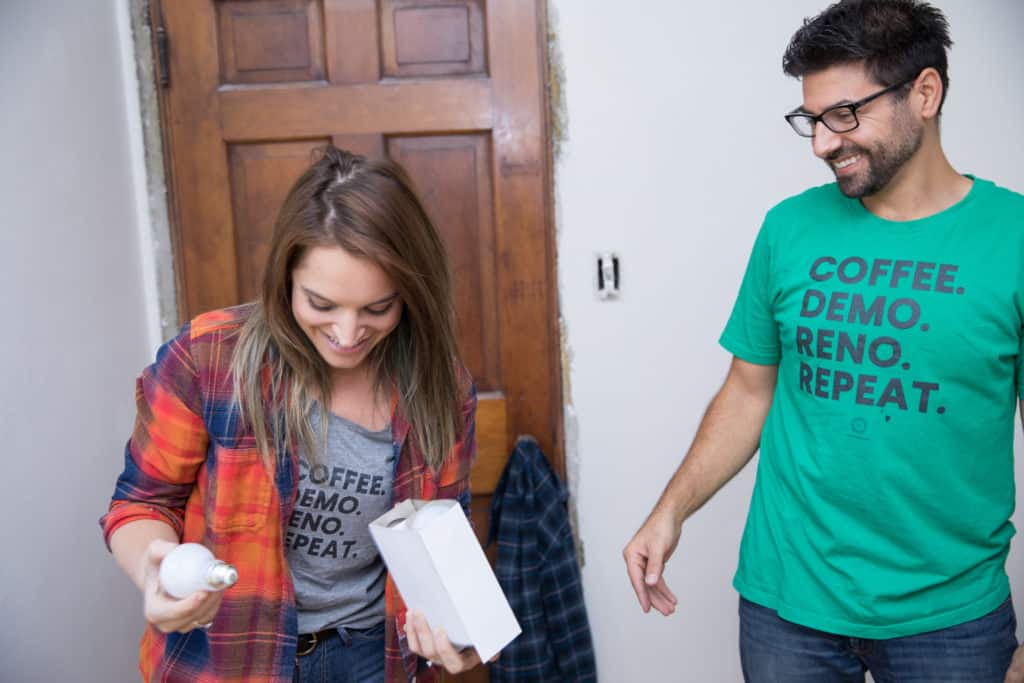
Shades of Light
When you’re shopping for bulbs and locate a bulb that is the shape, size, and brightness you need you’ll then have to decide what temperature of light you want for your space.
Light temperature is measured in degrees of Kelvin that ranges from 1,000 to 10,000. The lower the degree the warmer the light. The higher the degree the cooler or bluer the light. Bulb manufacturers will often categorize a range of color temps by calling them variations of “Warm White”, “Soft White”, and “Daylight”. Since each manufacturer has their own system we recommend reading the degrees of Kelvin on the box and making your decision from there.
Keep your lighting pretty much consistent from room to room throughout your home. We like to live in the 2700 – 3000 range. We recommend you keep cozy, relaxing spaces, like the bedroom, warmer in color temperature since blue light is a bit jarring and is scientifically proven to keep you awake. Cooler light is appropriate for the garage or other spaces where you want to stay alert and focused.
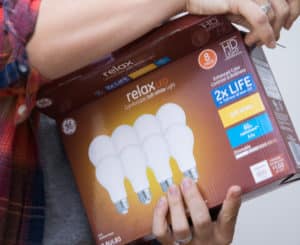
Shopping for Fixtures for Small Spaces
Since there are so many lighting options out there, I want to give you a few tips on how to select fixtures that are appropriate for your space–especially if it’s small. It’s easy and convenient with online shopping!
Pro Tip: It’s all about setting those filters to sift through the sea of options.
First, a design mentor once told me to not bother with ceiling fixtures that have less than 3 bulbs. Fixtures with three or more bulbs give you more light–and more bang for your buck. Just because you have a smaller space doesn’t mean you want to skimp on light! Which leads me to my next tip…
Dimmers, dimmers, everywhere. Installing dimmers is a relatively easy task and gives you control over your lighting. Nick loves super bright spaces….and me? I prefer spaces that are dim….even when I’m working. Dimmers are my mantra when it comes to lighting for your whole family: You do you!
If your space is small don’t be afraid to select a dramatic eye-catching piece! Fixtures that are beautiful and unique grab the attention of anyone who enters the room and draws the eye up! This makes everything feel grander and can even give the illusion of higher ceilings.
Speaking of ceiling height, just because you have 8’ ceilings doesn’t mean you have to get flush mounts that hug the wall. As long as you have about 7’ from the bottom of your fixture to the floor you can get pieces that have some height to them.

Go Forth, You Lighting Designer You
We know, it seems like there are so many options, how can you even begin to choose. Don’t get overwhelmed, think about your fixture and how you want your space to feel and go from there!
Lighting really can make or break how a space feels. We hope this helped empower you not only to install a light fixture but to create an ambiance you love in your home.
Feel like you could tackle a light fixture swap of your own now? Let us know below!

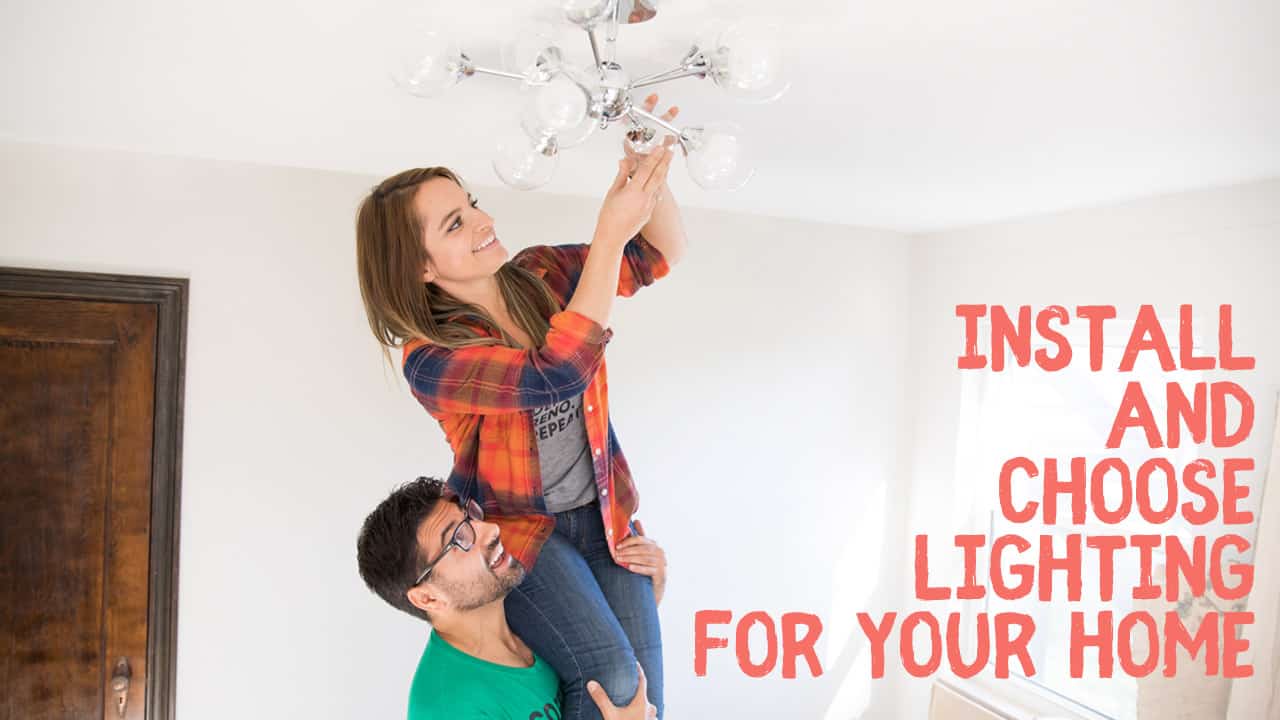
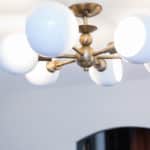
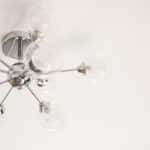
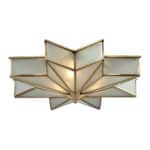
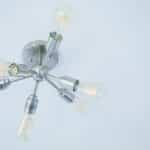
No Comments